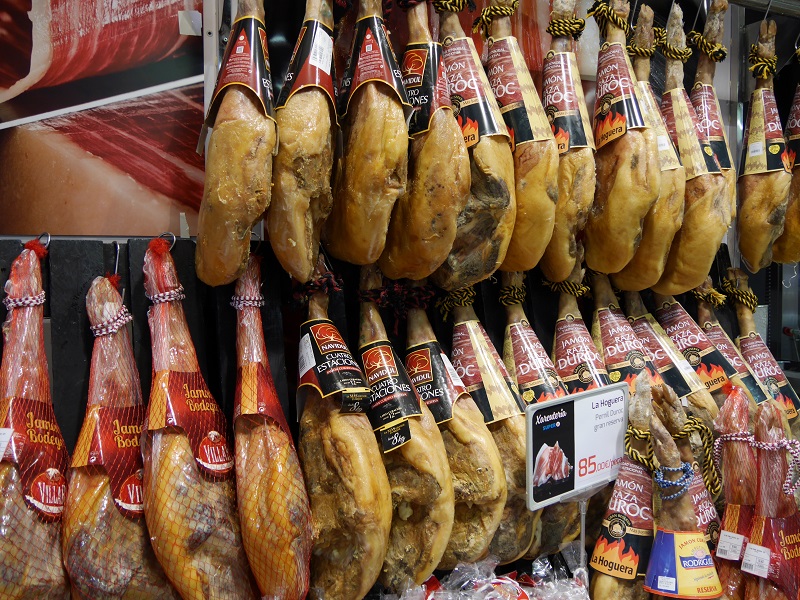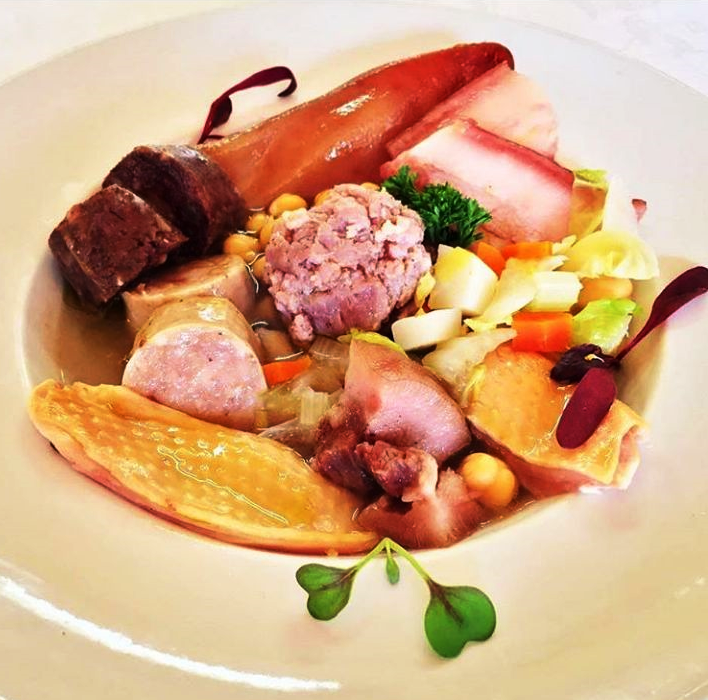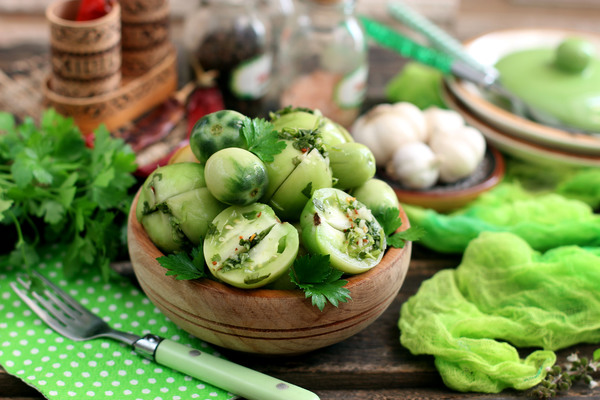Jamon Iberico & Jamon serrano: Spanish ham. Prices in Andorra
Jamon is the most famous national dish of Spain, made from a pig’s leg. The true Spanish jamon, in accordance with tradition, is prepared and aged for up to 1 year. Preservatives in production are not used, therefore, hamon is considered a rather expensive delicacy.
Traditionally, the most common on sale jamon is divided into 2 types:
– Jamon Serrano – a semi-blooded pig breed without Iberian blood or with a small presence of Iberian blood. A distinctive feature of Hamon Serrano is the hoof of a pig of whiter light (white) color.
– Jamon Iberico – a pure Iberian breed of pigs is used. A distinctive feature of Hamon Iberico – the pig’s hoof must be black (pata negra) .
Among the most expensive types of jamon: Recebo is made from pigs, fattened by acorns with the addition of leaves or stems. The most expensive jamon – Bellota, is made from pigs, fattened only by acorns (the taste is similar to the taste of wild boar).
Jamon also has a classification according to the time-preparing principle:
Curado – about 6-8 months
Reserva – about 9-10 Months
Bodega – about 12 months or more.
Origin of the delicacy
The first recipe for making cured ham was written in a book by Cato the Elder (lat. Marcus Porcius Cato) in about 170 A.D. Thus, the age of this delicacy is more than two thousand years old. The recipe has not fundamentally changed to this day: pre-salted pork gammon hung in a cellar from the ceiling, where they had to hang all winter. During this time they matured and acquired their exquisite taste. The product had a long storage time and could be transported over long distances. The Romans who came to Spain appreciated the local delicacy and contributed to its further victorious march through the territory of the Roman Empire. Christopher Columbus took cured ham on his long journeys. Already in the eighteenth century, many countries of the world bought this famous delicacy.
How to make cured ham
The technology of cooking ham is a separate topic. First, to speed up the process of dehydrating the meat, the ham is salted in a large amount of sea salt. The product stays in this state for two weeks, after which it is washed and hung on hooks. After, alongside a gradual increase in temperature, the ham is dried for seven months to one and a half years, after which it is cooled for about another year. The ripening and quality of the ham is determined by special experts. Experts pierce the gammon and evaluate the flavor of the product with a fine needle made (according to tradition) of cow or horse bone. The sophisticated technology involved in cooking ham allows you to achieve an amazing taste which is delicate, elegant and fragrant.
How to choose the best cured ham:
To select a truly high-quality product, you need to learn a few rules:
• The ham should not be sold in vacuum packaging.
• There should be no hair on the leg.
• The leg should be flattened laterally.
• On each leg of the “correct” ham, there must be a stamp on which the week and year of manufacture are applied. Between the date of manufacture and the time of purchase must be at least two years.
• For the front legs, the price of the product should not be less than 10 euros per kilogram and for the rear legs 15 euros per kilogram.
Other interesting facts:
Cured ham in Spain is served sliced very thinly. A trained specialist who is responsible for slicing the ham is called a “jamonero”. The ham contains no cholesterol and it can be eaten even on many diets. This meat delicacy is often included as a “tapas” – a set of characteristic Spanish appetizers. The delicacy is produced throughout Spain, with the exception of some coastal areas.
How to eat jamon?
The best way to eat jamón is undoubtedly freshly sliced, so to speak “from knife to mouth.” But since this option is not always available, I recommend that our customers purchase pre-sliced and vacuum packed jamon. This is the closest option to a fresh cut. But what is absolutely undesirable is to buy a whole leg and consume it for more than a few days. In this case, jamón loses all its organoleptic properties, says Enrique Tomás, owner of the company that sells about 15% of all Iberian produced jamón.
Buy jamon in Andorra. Average prices for jamon
DeOro: from 29.90 euros per 7 kg
La Hoguera: from 85 euros per 7 kg
Valle Alagon Salamanca: from 169 euros for 7 kg
Encinar Iberic: from 365 euros for 7 kg
Gonzales Revilla: from 119 euros for 7 kg
- Alcohol prices
- Cigarettes and tobacco prices
- Food prices
- Ski and snowboard equipment prices
- Smartphones prices
- Fuel prices
- Cosmetics and perfume prices
See also Andorra Yellow Pages
See also Andorra Business Guide
See also Andorra Travel Guide











